FOFA PROJECTS 2005
[through 2003]
Propagation Workshop – June 18, 2005
Propagation workshops target Maui’s community groups and interested individuals.
Past classes have included: Native Plant Society, Maui Association of Landscape Professionals, Maui Master Gardeners and Keokea Homesteaders. This year we were honored to sponsor students from the Maui Garden Club.
The plants propagated at this workshop were later sold at the MALP plant sale for the benefit of the Maui Garden Club.
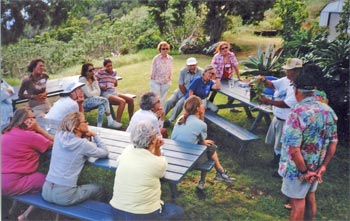 |
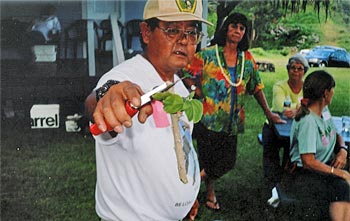 |
| Richard Nakagawa teaches the careful skill of propagating hard-to-root species from stem cuttings. |
Richards shows how cuts are made at an angle from the leaf node to remove excess wood that may encourage rot.
|
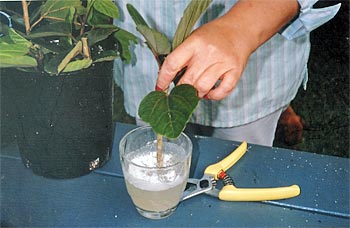 |
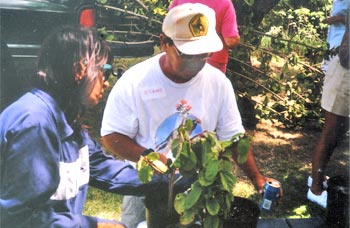 |
|
Combining rooting powder into the container of water evenly coats the cutting with growth hormone and avoids contaminating the jar of rooting powder. |
Although the presence of leaves on cuttings is a strong stimulus to root initiation, large leaves must be reduced to lower water loss and dehydration of cuttings. Richard helps Sylvia Cabral with pruning. |
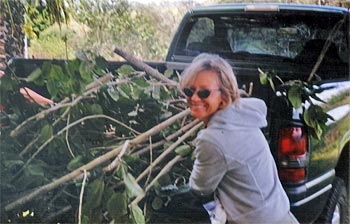 |
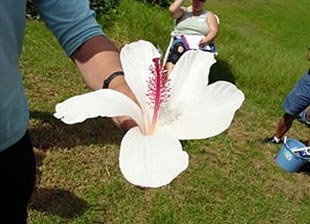 |
|
Becky Erickson takes cuttings from activiely growing shoots, ideally one year old … not too soft and immature nor too mature and woody.
|
Root cuttings of many species are best taken either before or after, rather than during the flowering period. The Hibiscus waimea bursts into full bloom in August (in another 2 months). |
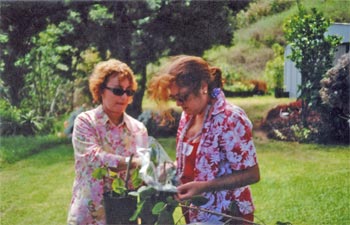 |
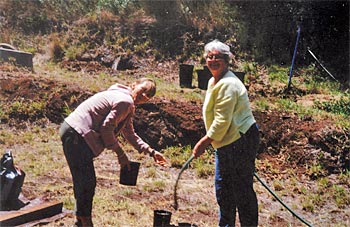 |
|
Commercially, cuttings are put under mist sprays allowing for use of large cuttings with greater leaf area. Barbara Lund and Marge Bonar cover their pots with polyethyelene bags, which work just as well to prevent water loss from leaves.
|
Sanitation should be practiced throughout the propagation procedure … using sterilized tools, pots and potting soil. (From left, Donna Mann and Wendy Cameron.)
|
After demonstration and instruction by Richard Nakagawa, members of the Maui Garden Club mass-produced pots of Hibiscus waimea for distribution during Arbor Week 2005.
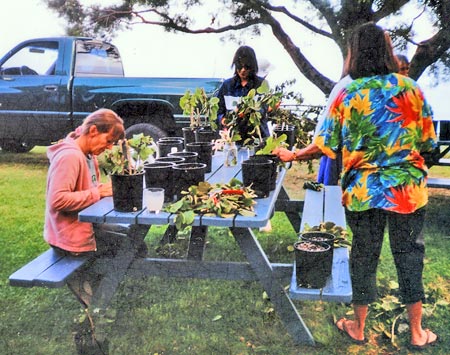 |
|
(From left, Donna Mann, Sylvia Cabral and Kathy Lindsey.) |
Other Projects Paid For by Individual Donors
Thanks to generous donations by individuals, FOFA has been able to support progressive projects in 2005, as well as Arboretum basic maintenance. (Click
here for Donors List).

Creation of this website was funded by donations in memory of Jack Vockrodt (April 6, 1917 – December 8, 2003), who supported the Arboretum for 45 years,
from 1957 to 2002.
Ongoing updates are funded by individual donations and volunteer time.
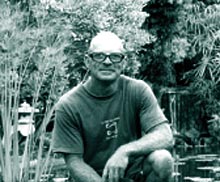 |
 |
 |
|---|---|---|
|
John Gagnon helps with maintenance. He specializes in progressive projects such as roadwork and clearing, using his dump truck and mini-excavator.
|
All well run non-profits need a good bookkeeper. We are fortunate to have Linda Pope, who is experienced with 501-C3 corporations.
|
Terry Reim, FOFA’s webmaster, planted in front of his computers, digging his way through reams of information, pruning the old dead words, which in the new season brings forth our annual newsletters.
|
 |
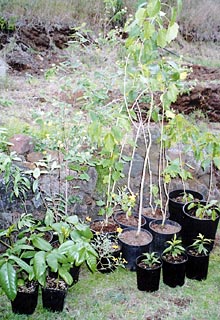 |
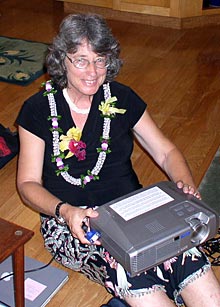 |
|---|---|---|
|
One of the primary goals of the Arboretum is to maintain healthy plants which leads to healthy weeds, which means continuous maintenance. Antonio Diaz takes care of these matters.
|
Rare plants ready for planting from Hoolawa Farms, Maui Nui Gardens and Richard Nakagawa of the Native Plant Society.. |
FOFA was created as a non-profit to qualify for grants and tax-deductible donations. Lucienne de Naie makes time in her busy schedule to do our grant writing. Her work has made possible accelerated Arboretum progress. |
FOFA PROJECTS 2004
“Project Plant” 2004
Twenty-one species – 90 total plants – are out
of quarantine, ready for outplanting into Pu’u Mahoe’s Fleming
Arboretum. Upper, middle and lower-story plants will be planted
together to maximize space, as well as inspiring landscape designers
with interesting plant combinations. Phase 2 of Project Plant
begins in June. Project Plant totals 159 plants, 45 species, of
which 21 are new to the Arboretum. Project Plant is funded by
grants from Fred Baldwin Memorial Foundation, A&B Foundation
and Atherton Family Foundation, Cooke Foundation and individual
donations.
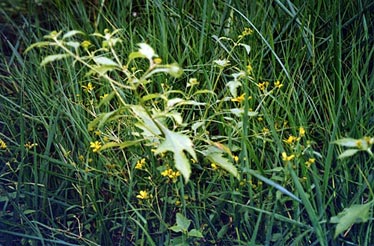 |
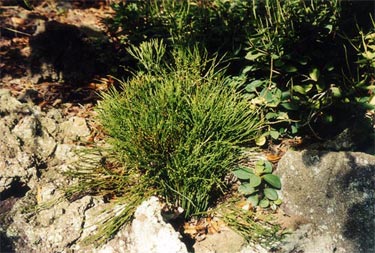 |
| Native grass (Eragrotis atropiodes) with the endangered Nehe (Lipochaeta kamolensis). |
Moa fern (Psiloum nudum) with ‘ala ‘ala wai nui – a Peperomia from Kanaio. |
|
A walk through
Fleming Arboretum explores different combinations of plants that complement each other … to inspire native planting in our local landscapes. |
|
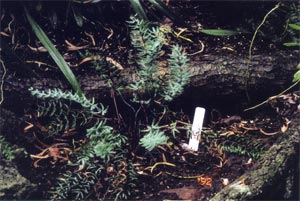 |
 |
| Kalamoho Fern | Deschampsia nubigrna grass |
|
Project Plant includes ferns and grasses of Maui’s dryland forest.
|
|
Plants Ready for “Project Plant”
Twenty-one of the species are from the Auwahi Forest and new to the Arboretum, creating a more complete collection of the endemic Auwahi species.
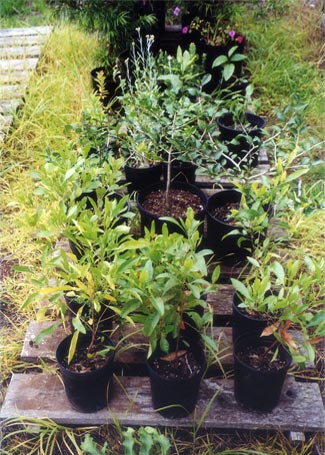 |
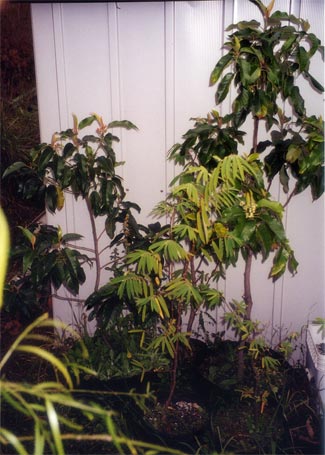 |
|
A’e, ‘Alani,
Haleakala ‘Iliahi, A’e A’e, ‘A’ali’i and Mamane |
Kauila and ‘Akoko |
Propagation Workshops 2004
April 17 – Air-layering Workshop
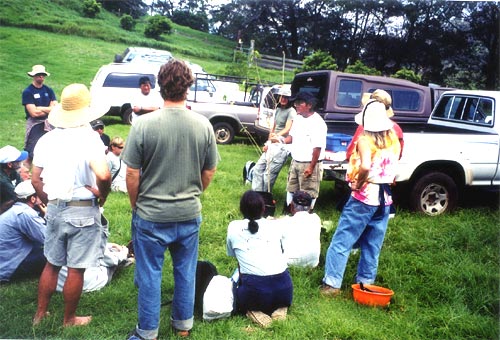 |
|
|
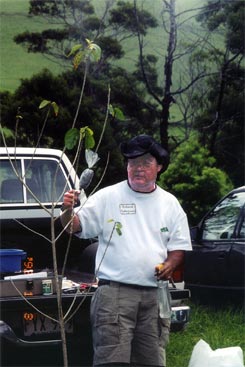 |
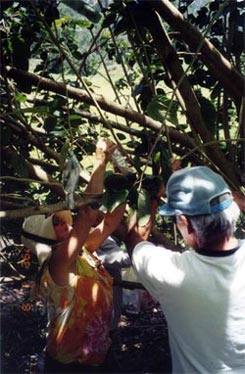 |
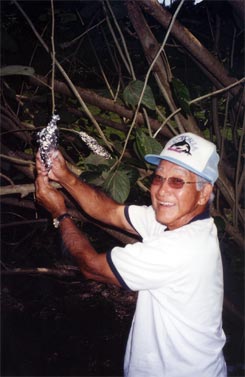 |
| Richard Nakagawa from Maui County’s DLNR Nursery, led the workshops. Here he demonstates selecting a branch of at least 45 degrees, so roots will grow down the stem. If the angle is greater, gravity will cause roots to grow up the stem. | Maui Master Gardeners Sue Ellen Barton of Olinda and Walter Sasaki of Wailuku work on selected branches for air-layering. For optimum rooting, branches growing vigorously with large leaves are chosen so they can supply carbohydrates to the newly developing roots. | Walter Sasaki wraps foil around completed air layer to reflect sunlight, which will keep it from drying out during the 2-month wait to form roots. |
June 19 – Workshop postponed for 1 month due to minimal root growth, most likely caused by extremely wet weather.
July 17 – Grafting Workshop and Harvest of Air Layers
Native Red Hibiscus root stock and the endangered white hannerae scions were use for the workshop.
Successful grafts create a hibiscus bush with both red and white flowers.
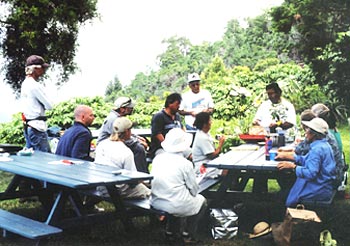 |
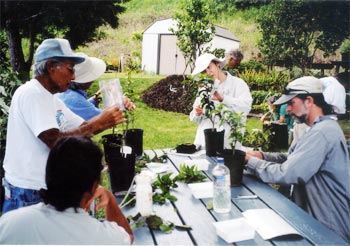 |
|
Richard Nakagawa – with assistant Terry Nutt |
Participants practice “cleft grafting,” |
 |
 |
|
Terry Nutt wraps graft with plastic to keep the scion from drying out while it adheres to the rootstock (usually 2 weeks). |
David Clements and Dwane Sparkman perfect their new skill. |
A total of 19 students completed both workshops, and each took home their 3 pots of newly propagated native hibisucus.
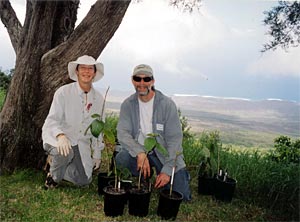 |
 |
|
Job well done … Linda and Charlie Chandler. |
Jan McEwen and Walter Sasaki share favorite jokes. |
Tai Domen of Ali’ilani Arborcare does magic on shade trees at cabin.
Tai is a Maui boy raised in Kaupo by well-known parents and owners of Kaupo Ranch Store, Linda and Manny Domen.
Tai became a “Certified Arborist” in San Diego, CA. Maui is fortunate to have his quality of work.
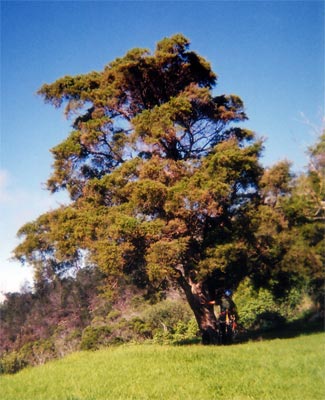 |
 |
|
Before |
After |
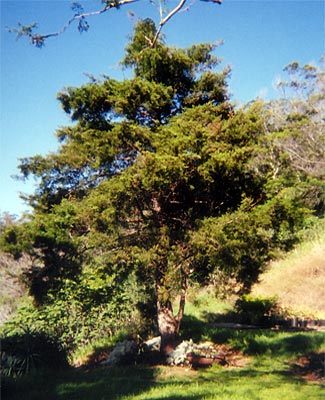 |
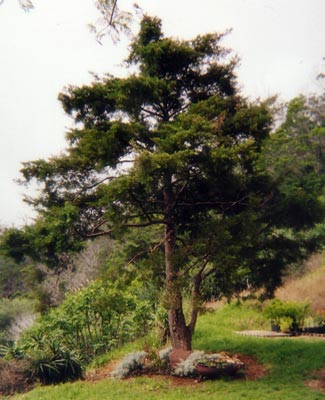 |
|
Before |
After |
Seed & Plant Distribution
A concerted effort is made to harvest and distribute all rare or requested seeds:
Abutilon menzesii, Akoko, ‘Ala’a, ‘Alani, Hibiscadelphus hualiensis, Lama, Halapepe, Ho’awa, Holei, Kauila, Kolomanu, Kookoolau, Na’u, ‘Ohe, Papala, Papala kepau, and Pua Kala.
We share cuttings of the Hinahina and different native hibiscus.
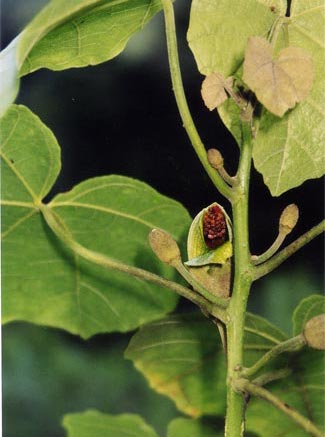 |
 |
|
PRESERVATION THROUGH DISTRIBUTION Hibiscadelphus hualiensis seedlings were a gift from Linda Nelson, president of the Native Plant Society, in 2000. Linda collected the original seed in 1980 from Pu’u Mahoe’s only tree. Since then, Pu’u Mahoe’s tree has died. These offspring of Linda’s seedlings planted at Pu’u Mahoe are thriving and producing seeds for distribution. |
‘Ala’a, Pouteria sandwicensis from Auwahi. ‘Ala’a seedlings were donated to the DLNR for the 2004 Arbor Day tree giveway in November at Maui Nui Gardens. |
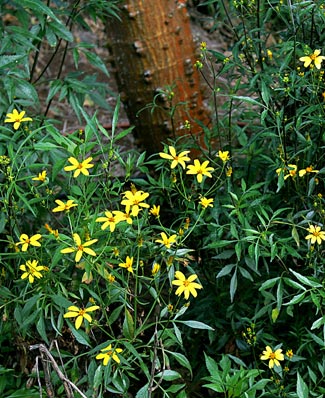 |
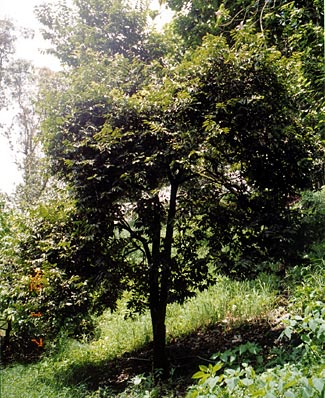 |
|
Ko’oko’olau, native Spanish Needle, has lost its thorns adapting to paradise. When in flower they become a carpet of yellow daisies. |
Lama, Diospyros sandwicensis from Auwahi, is a sacred wood of traditional Hawaiian culture. In adapting to Hawaii, its persimmon-like fruit evolved to a size small enough to be carried in a little bird’s beak … distribution insured its survival. |
Erosion Control
 |
ARBORETUM PRESERVATION Because Pu’u Mahoe is a cinder cone composed of predominaltly cinder soil, any bare slopes are an erosion problem. Above is one of the problems areas that has been reseeded and kept trimmed to control the weeds. Eventually, grass will take over to control erosion and choke out weeds. Currently, this area has only 50% coverage. |
USDA Wildlife Habitat Incentives Program (WHIP) 2003-2004
A $23,536 grant to the landowner that benefits the Arboretum.This grant implements fencing and removal of invasive species, progressing the mission to protect species of Maui’s dryland forest.(USDA pay 75% – the remaining 25% by in-kind volunteer work and equipment donations.)
 |
| Fencing the 7-acre Arboretum began in 2004, replacing 50-year-old Kahului Railroad ties and rusty barbed wire with pig wire and Kiawe posts. |
 |
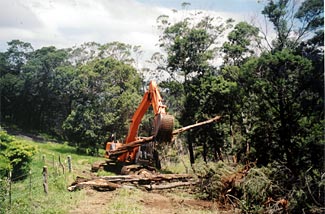 |
|
A 30-foot swath was cleared from both sides of the property boundary to protect new fence from falling |
Logs were used to block cows as old fence was removed and new was installed. |
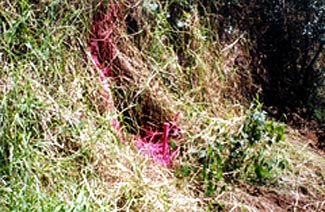 |
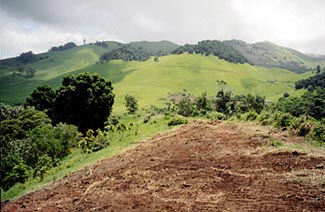 |
|
All the original property pins from 1950 were found to accurately align fence within property boundaries (pin in red). |
Clearing for fenceline opened up over an acre of Arboretum for future outplantings. |
FOFA PROJECTS 2003
Projects Paid For by Individual Donors
Thanks to generous donations by individuals, FOFA sponsored several projects in 2003, including new luau tables, urgent tree trimming, propagation workshops, new plantings and some basic Arboretum maintenance.
(Click here to see Donors List)
Two propagation workshops were sponsored by FOFA in 2003. The classes included students from the Maui Association of Landscape Professionals, as well as interested individuals. Richard Nakagawa, of the DLNR Nursery, taught air-layer and grafting techniques on two different native Hibiscus, the large fragrant white Hibiscus waimeae and the endangered Hibiscus waimeae subsp. hannerae.
 |
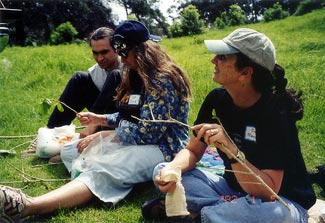 |
|
David Buck, Dot Buck and Judy Mancini (L-R) practice removing a cambium layer on Hibiscus branches preparing area for an air-layer.
|
|
 |
|
|
Terry Nutt wraps scion onto rootstock, careful to match their cambium
layers. |
Richard observes students attempting grafts. (L-R) Richard Nakagawa,
Ed McBarnett, Mark Potter and Will McBarnett. |
 |
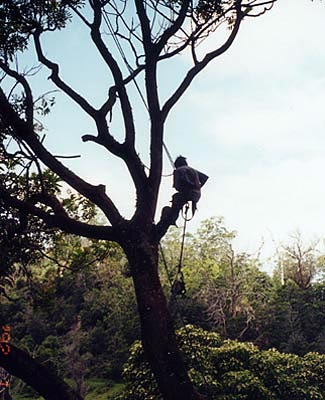 |
|
Jack Crow paints “luau” tables at Maui Sierra Club Volunteer
Workday. Tables were acquired in a cost-share agreement with Pacific Equipment. |
Brandt Gonzales of Branch Out Tree Services secures ropes to prune
a large Neneleau threatening to fall on nearby trees. |
 |
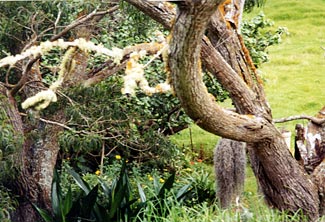 |
|
Jean Gagnon has helped with Arboretum maintenance for 8 years. Jean is in charge of all mowing, weed-eating and irrigation. |
Koa trees were pruned for their health and the safety of hikers.
|
